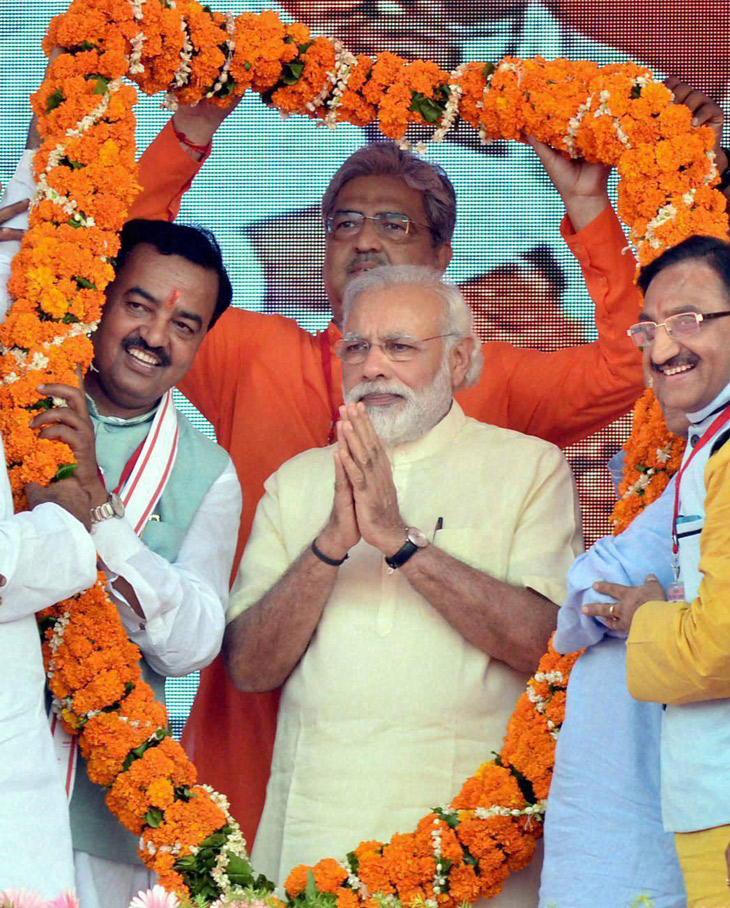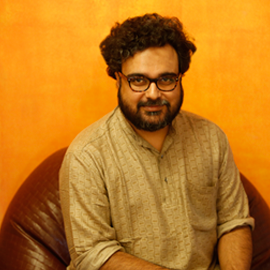Narendra Modi sounds UP poll bugle with anniversary rally in Saharanpur

- Narendra Modi celebrated 2 years as PM with a rally in Saharanpur, UP
- The rally was aimed at the forthcoming Assembly polls in UP and Uttarakhand
- Modi showcased his achievements and reached out to various sections
- But he did not attack his opponents
- Why was Saharanpur chosen as the venue?
- How did the audience respond?
- What did Modi say?
Prime Minister Narendra Modi chose to celebrate the completion of two years in office at a rally in Saharanpur, Uttar Pradesh. The reason for this is simple - he wanted to blow the bugle for the Uttar Pradesh Assembly elections due by next year.
The UP elections will be crucial for Modi. They will be like a semi-final before the 2019 Lok Sabha polls.
As of now, the Bharatiya Janata Party (BJP) has only 41 seats in the 403-member UP Assembly. To form government, it will need to increase its tally five times over, which won't be an easy task.
The Saharanpur rally showed how desperate BJP is to capture power in India's most populous state. Union Home Minister Rajnath Singh, a former chief minister of UP, addressed the rally before Modi. "This 14-year vanavaas (exile) of the BJP in the state should end now," he said.
BJP's UP in-charge OP Mathur also appealed to the audience to support the party. He also announced a toll-free number where people can call blank to become members of the party.
The BJP announced its Mission 265+ from the Saharanpur rally, revealing the number of seats it aims to win.
The highlight, of course, was Modi's speech.
"This time, two years ago, I was taking my oath as the prime minister at Rashtrapati Bhavan. Today I have come to you to give you an account of my two years in office. I am an Uttar Pradeshwala. I am a Member of Parliament from the state," Modi said in his opening remarks.
Back in election mode
Clearly, the PM was in election mode. The recent victory in Assam has energised his party and it wants to keep the momentum going.
Modi's body language was the same as before last year's Bihar Assembly elections. He spoke loudly and took extra efforts make his point. The style and delivery were the same as were the references to the huge crowd and his connection to the land.
As far as his performance is concerned, he mentioned his pet schemes like Beti Bachao Beti Padhao, Swachh Bharat Abhiyan, Mudra Yojna and Fasal Bima Yojna and focussed on issues such as sanitation, women, employment and development.
He promised that "the government is making policies through which the income of farmers will double by the year 2022".
Referring to an issue concerning the farmers of Western UP, he said: "when we came to power, payments to sugarcane farmers worth over Rs 14,000 crore were pending. Most of it has been disbursed. Only Rs 700-800 crore is left. We are requesting the state government and warning sugar mills to immediately make the payments".
He made an important announcement about the healthcare sector. "My Cabinet is going to bring an ordinance to extend the retirement age for doctors to 65 years. We have less doctors in the country and to meet the requirement we have to keep them in service for more years," he said.
However, there were many claims which still don't match the promises made by him during the 2014 election campaign, be it in employment generation, women's safety, farmers' relief and electrification.
He asked the crowd, "Has anyone seen even a single report in a newspaper or news channel about any corruption charges against my government?".
"Do you remember the newspaper reports two years ago when corruption was the main talking point?" he further stressed.
At the same time he cleverly skipped mentioning his other promises such as bringing back black money, confronting Pakistan on terrorism and jailing those guilty of corruption.
Soft on opponents
Unlike Modi's aggressive campaigning and oratory in the Bihar elections, he was surprisingly soft on his opponents.
He didn't spent much time criticising the Congress. He even spared the BJP's main opponents in UP - Samajwadi Party and Bahujan Samaj Party - focussing instead on his own efforts and thoughts.
Perhaps he wanted to avoid polemics during his anniversary celebrations.
Actually, Modi is not in a hurry to attack his opponents. He is testing the waters and waiting for the right time to turn on the aggression.

Why Saharanpur?
Last year Modi went to Mathura. He also went to Varanasi, his constituency, a couple of times. So why did he choose to celebrate his second anniversary in Saharanpur?
Saharanpur is in the north-western corner of UP. The BJP has expanded its base in the region and it was essential for the PM to pay a visit.
Also, it is situated near the border of Uttarakhand and Haryana. So Modi wanted to reach out to three states in one go.
Uttarakhand is especially crucial as it is going to the polls in a few months. BJP has a government in Haryana and a large portion of the crowd came from there. The turnout at the rally was impressive.
People were busy recording Modi's clips, roving around the pandal and taking selfies.
The bottomline: The PM has launched his campaign in UP. The heat is on. Expect more fireworks in the months to come.
Edited by Aditya Menon
First published: 27 May 2016, 1:07 IST






![BJP's Kapil Mishra recreates Shankar Mahadevan’s ‘Breathless’ song to highlight Delhi pollution [WATCH] BJP's Kapil Mishra recreates Shankar Mahadevan’s ‘Breathless’ song to highlight Delhi pollution [WATCH]](https://images.catchnews.com/upload/2022/11/03/kapil-mishra_240884_300x172.png)

![Anupam Kher shares pictures of his toned body on 67th birthday [MUST SEE] Anupam Kher shares pictures of his toned body on 67th birthday [MUST SEE]](https://images.catchnews.com/upload/2022/03/07/Anupam_kher_231145_300x172.jpg)






